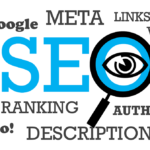PPC and Display Advertising Fundamentals for Online Retail
Understanding the fundamentals of Pay-Per-Click (PPC) and display advertising is crucial for online retailers aiming to enhance their digital marketing strategy, drive traffic, and increase sales.
Overview of PPC Advertising
PPC advertising is a model of internet marketing where advertisers pay a fee each time one of their ads is clicked.
It’s essentially a way of buying visits to your site, rather than attempting to “earn” those visits organically.
The most common form of PPC is search engine marketing (SEM), where ads appear alongside search results on search engines like Google and Bing, targeted based on user queries.
- Cost-Per-Click (CPC): CPC refers to the actual price you pay for each click in your PPC campaigns. Advertisers can set bids for each keyword, influencing where and how prominently ads are displayed relative to competitors.
Introduction to Display Advertising
Display advertising involves the use of visual ads, such as banner ads, video ads, and interactive media, displayed on third-party websites across the internet.
These ads can appear on websites, social media platforms, and other digital environments to increase brand exposure and attract traffic.
- Retargeting Campaigns: A key strategy within display advertising, retargeting involves targeting users who have previously visited your website with tailored ads to bring them back. It’s highly effective for increasing conversions as it focuses on users already familiar with your brand.
Differences Between PPC and Display Advertising
-
Targeting:
- PPC: Primarily targets users based on their search queries, offering highly relevant ad placements to users actively seeking related information or products.
- Display Advertising: Uses broader targeting criteria, including demographic information, browsing behavior, and specific interests, making it better suited for building brand awareness and retargeting efforts.
-
Objectives:
- PPC: Often focused on driving immediate sales or leads, leveraging user intent indicated by search queries. It’s performance-driven, aiming at direct response from users.
- Display Advertising: While it can also drive conversions, display advertising is particularly effective for increasing brand visibility and engagement. It’s used to nurture potential customers throughout the buyer’s journey.
-
Performance Measurement:
- PPC: Metrics such as click-through rate (CTR), conversion rate, and cost per acquisition (CPA) are crucial for measuring the effectiveness of PPC campaigns. These metrics reflect the direct response nature of PPC advertising.
- Display Advertising: While similar metrics can be used, display advertising also focuses on impressions, reach, and frequency to gauge brand exposure and engagement levels. The success of display campaigns might also be evaluated through lift in brand awareness and consideration.
Both PPC and display advertising offer valuable opportunities for online retailers to connect with their audience, each with its strengths and strategic uses.
PPC is ideal for targeting users with high intent to purchase, while display advertising excels in creating brand awareness and engaging users across the web.
Understanding the fundamentals, differences, and strategic applications of each can significantly enhance an online retailer’s digital marketing effectiveness.
Creating Effective PPC Campaigns for Online Retail
Effective Pay-Per-Click (PPC) campaigns are the cornerstone of successful digital marketing for online retailers.
These campaigns revolve around careful planning, strategic keyword selection, compelling ad copywriting, and prudent bid management and budgeting.
Keyword Research and Selection
- Identifying High-Intent Keywords: Focus on keywords that indicate a strong intent to purchase or learn more about your products. Use tools like Google Keyword Planner, SEMrush, or Ahrefs to find keywords related to your products and services with high search volumes and commercial intent.
- Long-Tail Keywords: Incorporate long-tail keywords—longer, more specific phrases that are less competitive and more targeted to specific product queries. They often result in higher conversion rates as they closely match the user’s search intent.
- Competitor Analysis: Analyze competitors’ PPC strategies to identify the keywords they’re targeting. This can reveal gaps in your strategy or opportunities to capitalize on less competitive keywords.
Ad Copywriting
- Highlight Unique Selling Points (USPs): Your ad copy should clearly articulate what makes your product or brand stand out. Include USPs like free shipping, eco-friendly materials, or exclusive offers to make your ads more enticing.
- Call-to-Action (CTA): A strong, clear CTA is crucial. It guides users on what to do next—whether that’s making a purchase, signing up for a newsletter, or learning more about a product. Use action-oriented language like “Buy Now,” “Sign Up Today,” or “Learn More.”
- Use Emotional Triggers: Effective ad copy often appeals to emotions or solves a problem. Crafting messages that resonate on an emotional level or address specific pain points can significantly increase click-through rates.
Bid Management and Budgeting
- Understand Bid Strategies: Platforms like Google Ads offer various bidding strategies tailored to different campaign goals, such as maximizing clicks, conversions, or targeting a specific return on ad spend (ROAS). Choose the strategy that aligns with your campaign objectives.
- Budget Allocation: Allocate your budget based on the performance of keywords, ad groups, or campaigns. Invest more in high-performing keywords or campaigns with a higher ROAS, and adjust or pause underperforming ones.
- Use of Negative Keywords: Regularly update your list of negative keywords to exclude irrelevant search queries. This ensures your ads only appear for searches related to your products, improving campaign efficiency and reducing wasted spend.
- Continuous Optimization: Regularly review your campaigns’ performance data to adjust bids, refine target keywords, and optimize ad copy. This iterative process helps improve campaign ROI over time.
Creating effective PPC campaigns requires a blend of strategic keyword selection, compelling ad copy, and smart bid management.
By focusing on high-intent keywords, crafting ads that resonate with your target audience, and continuously optimizing your campaigns based on performance data, online retailers can significantly enhance their visibility, attract more qualified traffic, and increase conversions, all while maintaining control over advertising costs.
Designing Display Ads for Online Retail
Designing effective display ads requires an understanding of visual principles, knowledge of various ad formats and platforms, and the ability to target the right audience.
For online retailers, display ads offer a powerful tool to capture attention, convey their brand message, and drive traffic to their site.
Principles of Effective Ad Design
- Strong Visuals: Use high-quality images or graphics that are eye-catching and relevant to your product or service. Visuals should complement the ad’s message and encourage viewers to take a closer look.
- Clear Messaging: Your ad should have a clear, concise message. Highlight your unique selling points (USPs) or a specific offer (e.g., “20% off all outdoor gear”). Ensure the text is easy to read and stands out against the background.
- Branding Consistency: Incorporate your brand’s colors, fonts, and logo to ensure consistency across your marketing materials. This aids in brand recognition and trust-building.
- Call-to-Action (CTA): Include a strong, clear call-to-action that tells viewers exactly what you want them to do next, whether it’s “Shop Now,” “Learn More,” or “Sign Up Today.” Make sure the CTA is visually distinct and easy to find.
Ad Formats and Platforms
- Banner Ads: Traditional display ads that appear at the top, bottom, or sides of websites. They’re effective for general awareness but can be prone to “banner blindness,” where viewers ignore them.
- Interstitial Ads: Full-screen ads that cover the interface of their host application or site. They’re highly visible but should be used sparingly to avoid disrupting the user experience.
- Video Ads: Can be standalone or appear before, during, or after digital video content. They’re particularly effective for storytelling and product demonstrations.
- Native Ads: Designed to blend in with the content of the website where they’re placed, making them less intrusive and potentially more engaging.
- Retargeting Ads: Target users who have previously visited your site but didn’t make a purchase, reminding them of what they’re missing out on.
Audience Targeting
- Demographic Targeting: Tailor your ads based on age, gender, location, income level, and more to ensure they’re shown to the most relevant audience.
- Interest-Based Targeting: Display your ads to users based on their known interests, hobbies, or past internet browsing behavior. This can be particularly effective for niche products.
- Behavioral Targeting: Use data about users’ past online behaviors, such as sites visited or purchases made, to target ads more precisely. This can include retargeting campaigns aimed at users who have previously interacted with your brand.
- Contextual Targeting: Place ads on websites that are relevant to your product. For example, outdoor gear ads on a hiking blog. This ensures your ads are seen by people already interested in related topics.
Effective display ad design involves more than just creating visually appealing graphics; it requires strategic messaging, understanding different ad formats and their best use cases, and targeting the right audience.
By applying these principles, online retailers can craft display ads that not only capture attention but also drive meaningful engagement and conversions.













